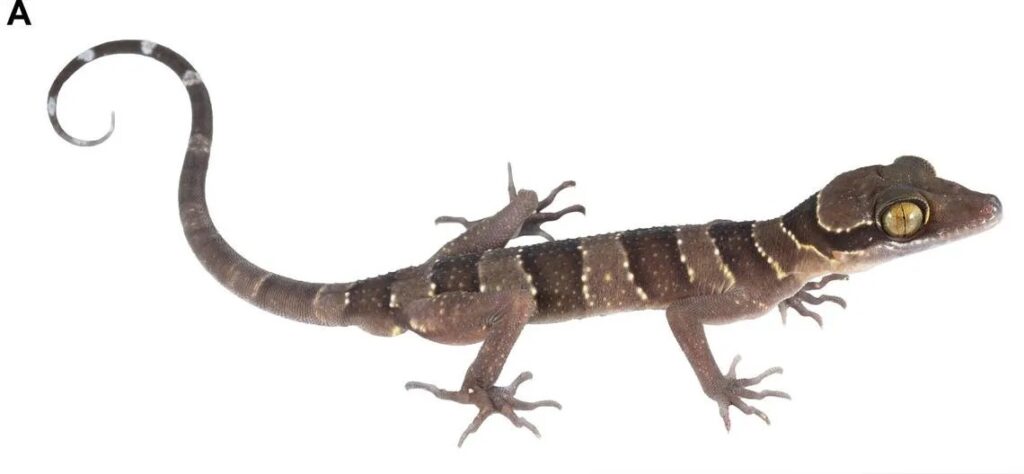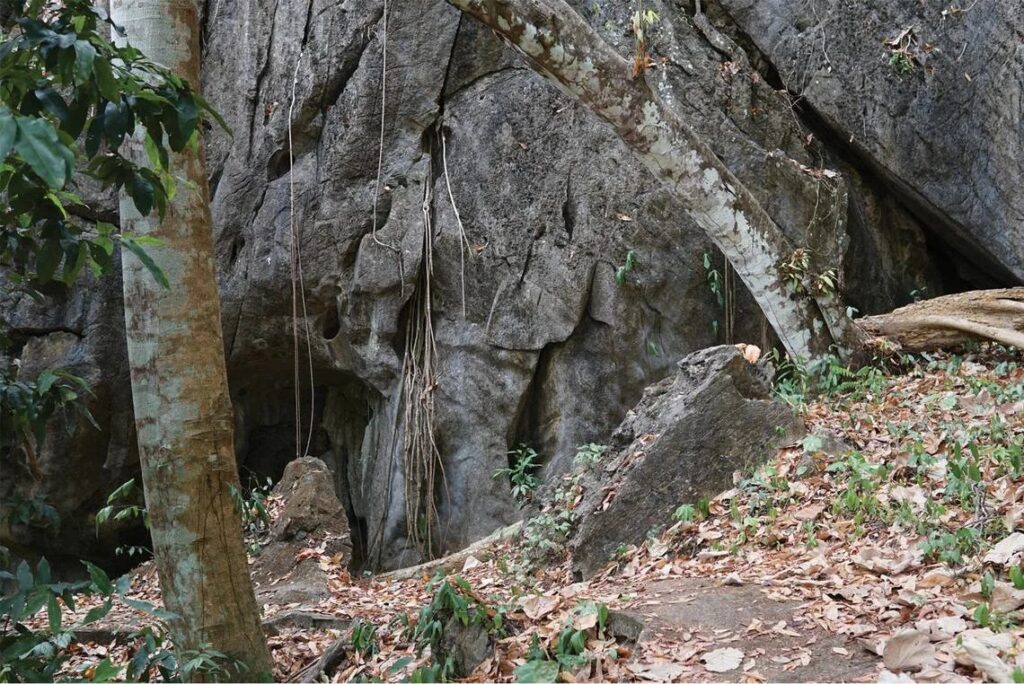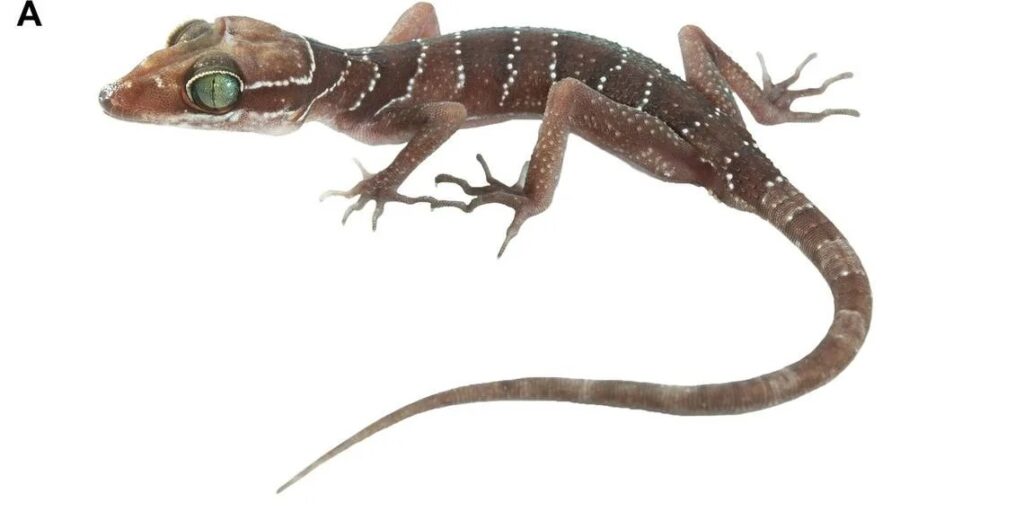
As the sun dipped below the horizon in the enchanting landscape of Thailand, a captivating sight unfolded. A striped creature, adorned with striking “large” golden eyes, gracefully settled onto a tree trunk. However, what truly made this spectacle extraordinary was the revelation that this pregnant being was not just another member of its species. It was an entirely new species, hitherto undiscovered by science.
This remarkable discovery took place in the rocky, forested terrain of Satun province, Thailand. A team of dedicated researchers embarked on numerous field surveys between 2016 and 2022, venturing into the heart of nature’s mysteries. Their findings, detailed in a study published on September 14 in the prestigious journal ZooKeys, unveiled a world of biodiversity waiting to be explored.

Amidst the awe-inspiring karst rock formations, the scientists chanced upon a total of eight golden-eyed lizards. These intriguing creatures were perched on tree trunks, shrubs, and boulders, their presence captivating the observers. As they examined these lizards more closely, the researchers realized that they had indeed stumbled upon a new species, now formally named “Cyrtodactylus sungaiupe,” or the Thung Wa bent-toed gecko.
The Thung Wa bent-toed gecko, an exquisite addition to Thailand’s rich biodiversity, can grow to just over 9 inches in size. It boasts distinctive features, including “large” eyes, a “triangular” head, and “well-developed” claws. Its golden eyes are adorned with a ring of yellow scales that almost resemble eyelashes. Bands of alternating light and dark brown stretch across its back, delicately outlined by thin white-yellow lines.
Remarkably, this new gecko species has only been documented in the Thung Wa District, a karst forest enclave surrounded by rubber plantations within Satun province. During their surveys, researchers had the rare opportunity to observe a pregnant Thung Wa bent-toed gecko with two “externally visible” eggs. In honor of the historical name of the Thung Wa District, this newfound species was christened “sungaiupe.”
Not content with a single discovery, the researchers continued their exploration. In 2019, while conducting fieldwork in another part of Satun province, they encountered 12 jade-eyed lizards, adding another layer of excitement to their mission. These geckos were perched around a karst rock formation and exhibited distinct characteristics. Further examination confirmed that a second new species had been found, now formally known as “Cyrtodactylus wangkhramensis,” or the Wangkhram bent-toed gecko.

The Wangkhram bent-toed gecko reaches a size of approximately 8.6 inches. It shares similarities with its golden-eyed counterpart, including “well-developed” claws, a “triangular” head, and “large” eyes. Unique to this species are small bumps scattered across its body. Its jade green eyes are adorned with a ring of yellow, eyelash-like scales. The lizard’s body is adorned with thick bands of various shades of brown, interspersed with dotted white lines.
The Wangkhram bent-toed gecko, like the Thung Wa bent-toed gecko, was named after the area where it was first discovered. These two species, though closely related, each have their distinct characteristics and are native to specific regions within Satun province.
Located about 570 miles southwest of Bangkok and bordering Malaysia, Satun province stands as a testament to the incredible biodiversity harbored by the region. The discovery of these gecko species adds to the growing list of Thailand’s natural wonders.
Identification of these new species relied on a combination of factors, including their coloring, scale patterns, and size. DNA analysis further confirmed their uniqueness, with the two new species exhibiting about 7% genetic variation from each other and at least about 8% genetic variation from other bent-toed geckos.

The research team, led by Korkhwan Termprayoon, Attapol Rujirawan, L. Lee Grismer, Perry Wood Jr., and Anchalee Aowphol, exemplifies the spirit of exploration and discovery that drives scientific inquiry. Their findings not only expand our understanding of Thailand’s rich biodiversity but also underscore the need for continued conservation efforts to protect these newfound treasures.

Leave a Reply